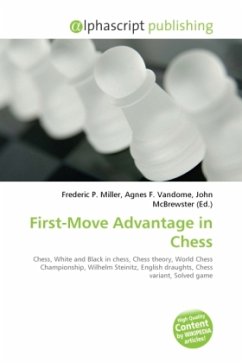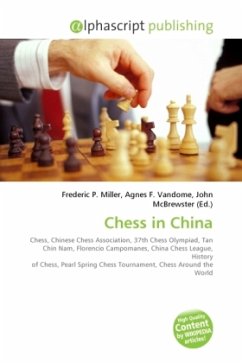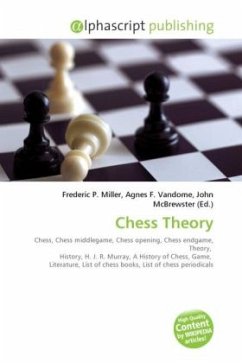
First-Move Advantage in Chess
Versandkostenfrei!
Versandfertig in 6-10 Tagen
30,99 €
inkl. MwSt.

PAYBACK Punkte
15 °P sammeln!
The first-move advantage in chess is the inherent advantage of the player (called White) who makes the first move in chess. Chess players and theorists generally agree that White begins the game with some advantage. Statistics compiled since 1851 support this view, showing that White consistently wins slightly more often than Black, usually scoring between 52 and 56 percent. White's winning percentage is about the same for tournament games between humans and games between computers. However, White's advantage is less significant in rapid games and in games between weaker players. Chess players...
The first-move advantage in chess is the inherent advantage of the player (called White) who makes the first move in chess. Chess players and theorists generally agree that White begins the game with some advantage. Statistics compiled since 1851 support this view, showing that White consistently wins slightly more often than Black, usually scoring between 52 and 56 percent. White's winning percentage is about the same for tournament games between humans and games between computers. However, White's advantage is less significant in rapid games and in games between weaker players. Chess players and theoreticians have long debated whether, given perfect play by both sides, the game should end in a win for White, or a draw. Since at least 1889, when World Champion Wilhelm Steinitz addressed the issue, the overwhelming consensus has been that a perfectly played game would end in a draw. However, a few notable players have argued that White's advantage may be sufficient to force a win: Weaver Adams and Vsevolod Rauzer claimed that White is winning after the first move 1.e4, while Hans Berliner argued that 1.d4 may win for White.












